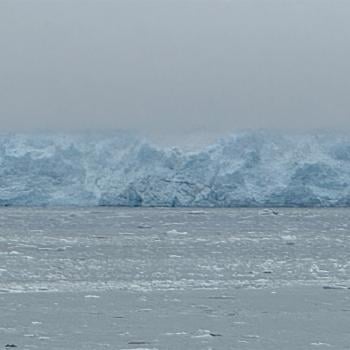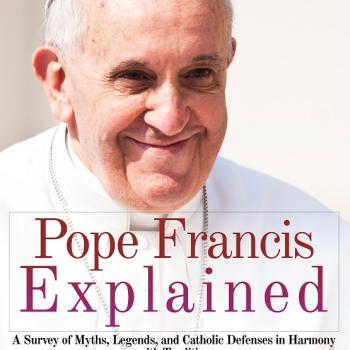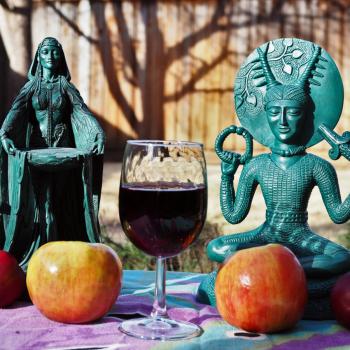On several occasions, the Buddha had carefully explained that language was limited and could not describe the Ultimate Truth. Whenever the Buddha remained silent in this way, it was called noble silence. Language is both limited and powerful. Returning to speaking after long periods of silence always causes me to become highly cognizant of every single word that leaves my mouth, and my responsibility for the meaning of it all. The experience is always liberating and empowering. Getting up super early, however, that is just hard.
During your pilgrimage, Thich Nhat Hanh said, "You can't grow a lotus flower on a marble surface. You need mud to grow flowers." Could you elaborate on this teaching?
About three quarters of the way through my journey, I became very ill with the absolute worst kind of flu possible. One afternoon, while feeling sorry for myself as I wandered around the monastery, I felt a gentle, warm touch—soft as a butterfly—light on my shoulder. I turned round to find myself peering into the eyes of an angel. The angelic being was in the form of a lithe Vietnamese nun, with a radiant glow. This benevolent Sister had heard I was unwell and had come looking for me. "Let me give you a healing massage," she said. Sweeter words I had never heard.
Now, I've had some great massages in my life, but I had never felt the way I did then. As I laid on my small monastic cot, the angel/nun was deeply immersed in the act of massaging me. Her hands touched me from the goodness of her heart. She simply wanted to help me feel better. The love I had felt coming from her almost caused me to burst into tears. Instead of crying, though, I became deeply relaxed, thankful, and full of joy. And then the epiphany came. And I understood what Thich Nhat Hanh meant when he had said, "There is a lotus in the mud. There is joy in suffering." I finally got it.
In Buddhist teachings, the lotus flower symbolizes our joy—the happiness that would not exist without the surrounding chaotic mud—our various problems. The mud is necessary. The mud creates the flower, is responsible for the joy. The two are dependent on each other. Thich Nhat Hanh points out, "A good gardener knows the way to turn mud into compost so that beautiful flowers can grow." The trick is to somehow appreciate the muck that appears in life as nourishing compost for our insight-filled joy, and not just view it as woeful muck. Only then will it be possible to cultivate joy. If we are unable to transform the muck in our lives into compost—if we are lousy gardeners—we will only see the muck as joy-busting muck.
My ferocious ailment that day at the monastery had led to the most transcendent massage of my life. The mud of my sickness had become compost for the glorious white lotus flower—my rapturous delight and healing. Thich Nhat Hanh had helped me understand that the power to turn poison into medicine is available to all of us. Bitter pain can either kill or become a potion for wisdom and bliss. The choice is ours.
In the book, you talk about the Buddhist teachings of interdependence, emptiness, inter-being, impermanence and non-self. Could you define these teachings and explain how they are related?
These teachings are five types of concentrations that the Buddha recommended we use as shovels to dig the ground of our mind. Many Buddhist traditions have used the metaphor of a wave in an ocean of water to illustrate that we do not have a distinct identity or self in the world. I like the way Sogyal Rinpoche explains this in The Tibetan Book of Living and Dying:
"Think of a wave in the sea. Seen in one way, it seems to have a distinct identity—a beginning and an end, a birth and a death. Seen in another way, the wave itself doesn't really exist, but is just the behavior of water, empty of any separate identity but full of water. So, when you really think about the wave, you come to realize that it is something made temporarily possible by wind and water, and is dependent on a set of constantly changing circumstances. You also realize that every wave is related to every other wave."
In this passage are the Five Concentrations—a wave's existence is dependent on the circumstances (wind and water). The wave has a certain kind of behavior, but is still water and therefore it is empty of any separate identity—this is, non-self. The wave is obviously linked or interconnected to all the other waves and therefore has the nature of inter-being. And that one wave will not last forever—it comes and goes—its nature is impermanence.
I love these teachings because they illuminate the reality of existence.
Why is an understanding of these Buddhist teachings important for the environmental health of the planet?
When we truly understand that our various actions cause specific consequences, very quickly we will see the link between everything in the world. For example, if we pollute our oceans and rivers, it's not long before the fish also become polluted. If we then eat that diseased fish, we ourselves become ill. This is a direct and logical conclusion to draw from the act of polluting our oceans yet incredibly, many of us deny this obvious link. Our very existence depends on recognizing and honoring these truths.
What big insight did you come away with at the end of your pilgrimage?
I have to say, I truly recognized that mindfulness is an essential life skill. Being aware of what is truly there in the moment is the only way to gain the kind of insight that allows one to flourish and soar. And in those moments of knowing, past wounds are healed, afflictions vanish, emotions are honored and understood, compassion and love arise, relationships are saved, obsessions lose their grip, opportunities are recognized, and a deep, abiding security within the wise Self reigns. Hallelujah.




